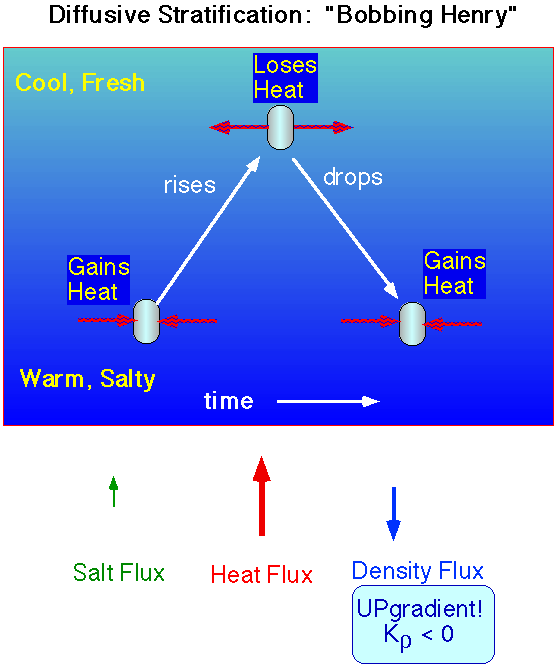

The same instability occurs with water parcels in such a stratification. The key to the instability is the fact that heat diffuses much more rapidly than salt (hence the term double-diffusion). The water parcel picks up heat, rises, loses heat, and falls, so transferring heat upwards just as the float does. Theoretical calculations for this situation (Turner, 1973) show that water parcels undergo a growing overstable buoyancy oscillation (see Internal waves 1), driven by heat diffusion.
The heat flux is large and upwards, while the salt flux is quite small because of the slow diffusion of salt. The net result is a downwards density flux, dominated by the heat flux. In terms of eddy diffusivities, the effective salt and heat diffusivities are positive (i.e., downgradient), but the density diffusivity is negative -- an upgradient flux!
References: Turner, J.S., Buoyancy Effects in Fluids, Cambridge University Press, Cambridge, U.K.368 pp.,1973.
Movie and text - Barry Ruddick
Digitization of movie - Dave Hebert